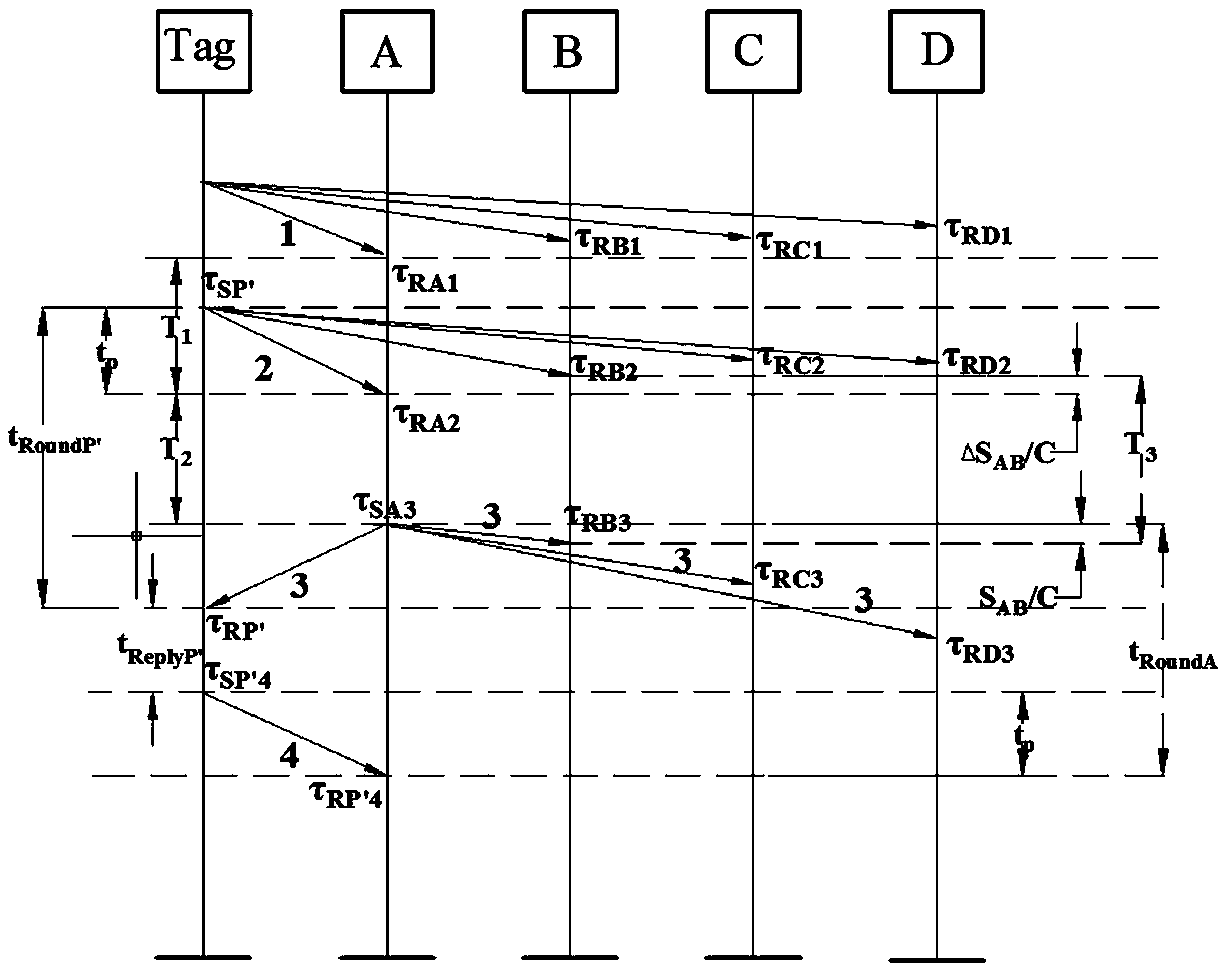Improved bidirectional bilateral range-finding method
A distance measurement method and bilateral technology, applied in the direction of measuring devices, radio wave measurement systems, and using re-radiation, can solve the problems of long channel occupation time and long time consumption, and achieve high positioning accuracy, long time-consuming solution, and low power consumption Effect
- Summary
- Abstract
- Description
- Claims
- Application Information
AI Technical Summary
Problems solved by technology
Method used
Image
Examples
Embodiment Construction
[0029] Such as figure 1 As shown, Tag is a mobile node, A, B, C, and D are fixed reference nodes, and A is a master fixed reference node, and B, C, and D are slave fixed reference nodes. Mobile node Tag at a very short time interval T 1 Continuously transmit two broadcast signals (both ultra-wideband signals), namely signal 1 and signal 2, and the four fixed reference nodes A, B, C, and D can all receive signal 1 and signal 2. Because the distances from the mobile node Tag to the four fixed reference nodes A, B, C, and D are not equal, the time at which the four fixed reference nodes A, B, C, and D receive signals 1 and 2 is also different. The difference is (C is the speed of light, ΔS AB is the difference between the distance from the mobile node Tag to the main fixed reference node A and the distance from the mobile node Tag to the fixed reference node B, ΔS AC is the difference between the distance from the mobile node Tag to the main fixed reference node A and the ...
PUM
 Login to View More
Login to View More Abstract
Description
Claims
Application Information
 Login to View More
Login to View More - R&D
- Intellectual Property
- Life Sciences
- Materials
- Tech Scout
- Unparalleled Data Quality
- Higher Quality Content
- 60% Fewer Hallucinations
Browse by: Latest US Patents, China's latest patents, Technical Efficacy Thesaurus, Application Domain, Technology Topic, Popular Technical Reports.
© 2025 PatSnap. All rights reserved.Legal|Privacy policy|Modern Slavery Act Transparency Statement|Sitemap|About US| Contact US: help@patsnap.com



